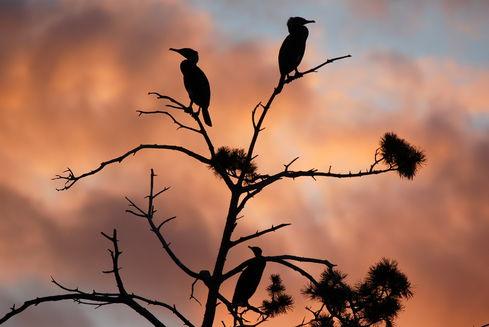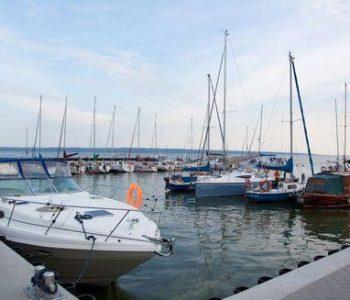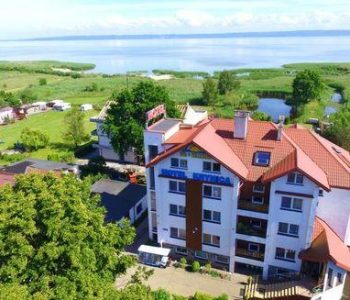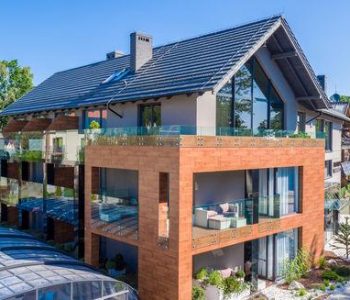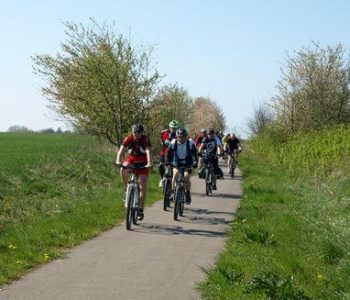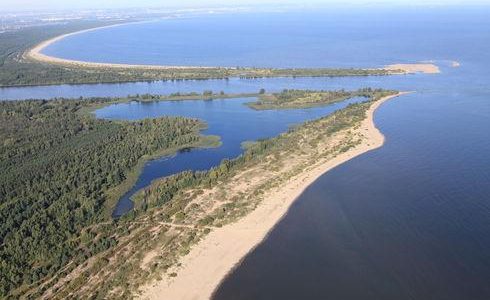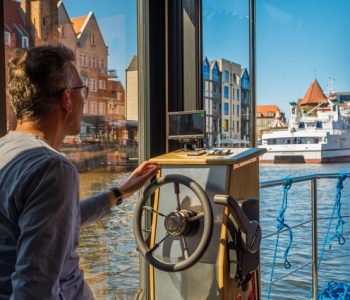Of the sand material which was deposited at the coast by the sea currents, the wind formed dunes, which were gradually settled by pioneering plants and animals. With time, rich deciduous forests grew here, protecting the land from the gusts of wind and the stormy waves that had incessantly affected the form of the Spit. Still, it was not only the forces of nature that had changed the appearance of this patch of land. Over the last few centuries, man has exerted an enormous impact. It is human activity that has made pine take precedence over the imposing beech, hornbeam, oak and linden specimens that once dominated the area.
Today, the Vistula Spit boasts rich wildlife, which for 25 years has been protected by the Vistula Spit Landscape Park. Its greatest asset is the diversity of landscape, the dominant features of which include pristine forests with a picturesque mosaic of flora, large linear dunes which are often home to the symbol of the Polish coast – the sea holly, and, obviously, wide sandy beaches. Birds are encountered at every step – shrieking seagulls and terns diving in search of fish, eagles and buzzards floating high in the sky, and ringed plovers and dunlins bustling about on the sand. However, the best-known representative of the Park’s rich avifauna is the great black cormorant, whose largest breeding colony is located on the Vistula Spit, in the area of Kąty Rybackie.
The Vistula Spit Landscape Park is also a rich book of culture, written by the successive generations of local inhabitants who fiercely fought the elements. The legacy of the region’s villages goes back to the early 13th Century and is linked with the conquest of this land by the Teutonic Knights. Its history was too stormy to preserve the monuments of that time, which is why only sites from the last two centuries can be seen here. These include residential buildings – villas, fishing cottages, the lighthouse in Krynica Morska, and the boundary stones from the Free City of Danzig (Wolne Miasto Gdańsk).
The Landscape Park is surrounded by a buffer zone covering two regions. The first of these is the remaining fragment of the Vistula Spit west of Sztutowo, equally interesting in terms of nature – if only for the possibility of meeting seals and other animals in the Vistula estuary, which features interesting landscapes, yet is much more fascinating historically. Here passes the more than one-hundred-year-old, still operating narrow gauge railway line; while in Stegna, there is a 17th-Century half-timbered church with unique furnishings and frescoes. The Vistula Spit also features sites of 20th-Century history, such as the Stutthof Museum – a place which commemorates the tragic events that took place here during WWII.
The Park’s buffer zone also covers the northern part of Żuławy Wiślane, the area snatched from the seas of the Vistula Lagoon. Besides natural beauty, it offers more than five centuries of gripping history. Numerous hydro-technical monuments can be found here – operating drawbridges and a swing bridge of the narrow gauge railway, as well as arcade houses, Dutch farmsteads, Koźlak – the last windmill in Żuławy, and many more sites, all of which are surrounded by rows of old willows, scenic fields and meadows.
